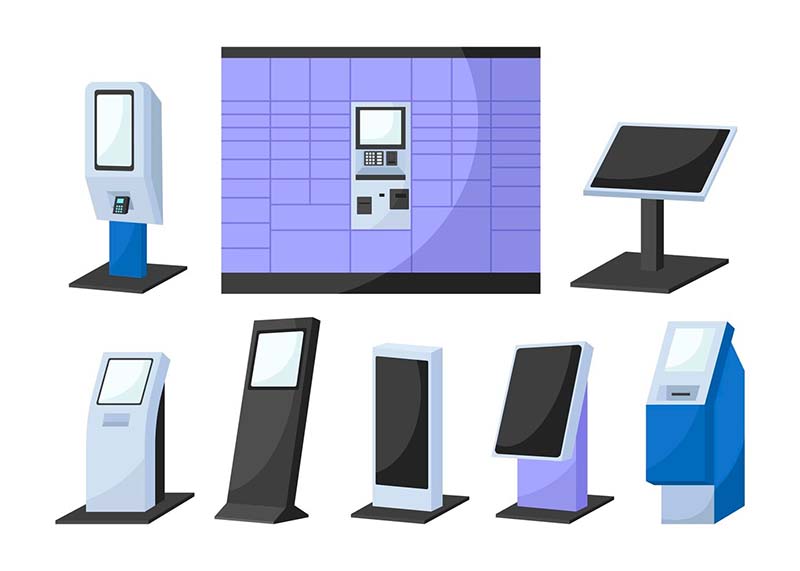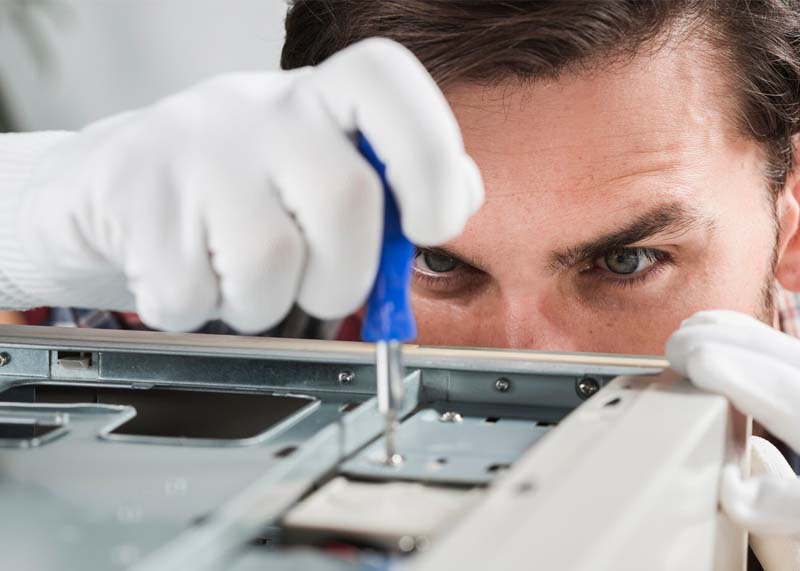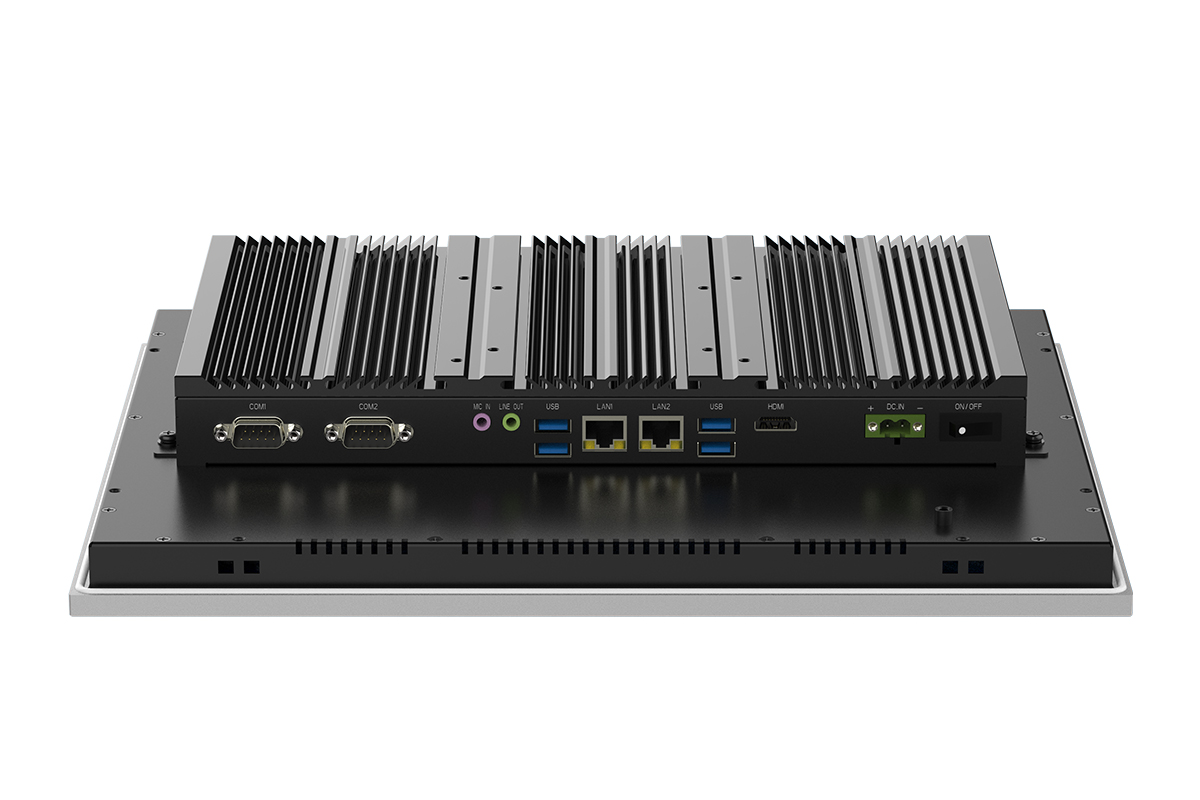In the fast-paced world of industrial technology, the significance of regular maintenance for fanless panel PCs cannot be overstated. These robust computing devices play a crucial role in various industrial applications, and their uninterrupted performance is essential for operational efficiency. This section provides a brief overview of why maintenance is paramount in ensuring the reliability of industrial fanless panel PCs.
Proper care and maintenance directly correlate with the overall performance and longevity of industrial fanless panel PCs. Unlike traditional systems with fans, these panel PCs rely on innovative cooling solutions for optimal functionality. The impact of neglecting maintenance can lead to decreased performance, increased downtime, and a shortened lifespan for these critical components. This section explores how strategic care practices can contribute to extended service life and consistent performance.

Understanding the Components
A. Overview of Key Components
To comprehend the maintenance needs of industrial fanless panel PCs, it’s essential to first understand the core components that make up these sophisticated systems. This section provides a comprehensive overview of the key elements within fanless panel PCs, shedding light on their roles and functionalities.
- Processor Unit (CPU):
- Explanation of the CPU’s role as the brain of the panel PC
- Overview of common CPU types used in industrial applications
- Memory (RAM):
- Understanding the significance of RAM in data processing
- Differentiating between volatile and non-volatile memory
- Storage Drives (HDD/SSD):
- Overview of storage options and their impact on data access speed
- Guidelines for optimal storage capacity based on industrial needs
- Motherboard and Connectivity:
- Explaining the motherboard’s role in component integration
- Overview of connectivity options such as USB, Ethernet, and serial ports
- Display and Touchscreen Interface:
- Importance of a high-quality display in industrial settings
- Maintenance tips for touchscreen interfaces to ensure responsiveness
- Fanless Cooling System:
- In-depth explanation of the fanless cooling mechanism
- Comparison with traditional fan-based cooling systems
B. Contribution to Overall Functionality
Each component in an industrial fanless panel PC plays a crucial role in ensuring seamless functionality. This part of the blog delves into how these components work together to provide a reliable computing platform for industrial applications.
- Synergy of Components:
- Discussion on the interdependence of CPU, RAM, and storage for processing tasks
- How a well-coordinated system contributes to overall efficiency
- Reliability and Redundancy:
- Highlighting the importance of redundant components for system reliability
- Strategies for minimizing the impact of component failures
- Performance Optimization:
- Exploring how each component can be optimized for enhanced performance
- The role of regular maintenance in preserving peak performance
Understanding these components lays the foundation for implementing effective maintenance practices, ensuring the sustained functionality of industrial fanless panel PCs in demanding environments.
Common Issues and Challenges
A. Identification of Typical Problems
Industrial fanless panel PCs, while robust, are not immune to common issues that can impact their performance. Recognizing these problems early is crucial for prompt resolution and minimizing downtime. This section outlines some of the typical problems faced by industrial fanless panel PCs.
- Overheating:
- Identification of signs of overheating and its impact on performance
- Causes of overheating in industrial environments and preventive measures
- Dust Accumulation:
- How dust can affect the fanless cooling system and internal components
- Regular inspection techniques to identify and address dust buildup
- Hardware Compatibility Issues:
- Common challenges related to hardware integration and compatibility
- Strategies for selecting components that work seamlessly together
- Software Glitches:
- Overview of software-related issues affecting system stability
- Importance of regular software updates and troubleshooting protocols
- Touchscreen Calibration Problems:
- Factors leading to touchscreen calibration issues
- Step-by-step guide for recalibrating touch interfaces for accuracy
B. Challenges Associated with Fanless Cooling Systems
While fanless cooling systems offer several advantages, they also come with specific challenges that need careful consideration. This part of the blog explores the unique challenges associated with fanless cooling in industrial panel PCs.
- Heat Dissipation Efficiency:
- Discussion on the efficiency of fanless cooling in dissipating heat
- Factors influencing the effectiveness of passive cooling mechanisms
- Environmental Factors:
- Impact of ambient temperature and humidity on fanless cooling
- Strategies for maintaining optimal environmental conditions
- Size and Form Factor Constraints:
- How the compact design of fanless panel PCs poses cooling challenges
- Innovative design solutions to address space limitations
- Heavy Workload Performance:
- Challenges posed by intensive industrial workloads on fanless systems
- Strategies for optimizing performance under heavy usage
By identifying these issues and understanding the challenges associated with fanless cooling, users and maintenance teams can proactively address and mitigate potential problems, ensuring the continued reliability of industrial fanless panel PCs.
Scheduled Inspections and Cleaning
A. Importance of Regular Inspections
Regular inspections are the cornerstone of proactive maintenance for industrial fanless panel PCs. This section emphasizes the critical importance of scheduled inspections in preserving the health and longevity of these sophisticated computing devices.
- Preventive Maintenance Philosophy:
- The shift from reactive to preventive maintenance strategies
- Overview of the long-term benefits of regular inspections
- Early Issue Detection:
- How scheduled inspections aid in early detection of potential issues
- Examples of problems that can be identified and addressed during inspections
- Downtime Reduction:
- The impact of proactive maintenance on minimizing unexpected downtime
- Case studies highlighting the benefits of regular inspections in industrial settings

B. Step-by-Step Guide for Cleaning and Dust Removal
Proper cleaning procedures are essential for preventing dust-related issues and maintaining optimal performance. This part of the blog provides a detailed step-by-step guide for cleaning and dust removal without causing damage to the sensitive components of industrial fanless panel PCs.
- Power Off and Disconnect:
- Importance of shutting down the system before cleaning
- Step-by-step guide for safely disconnecting the panel PC from power sources
- Exterior Cleaning:
- Using non-abrasive cleaning solutions for the external surfaces
- Recommendations for suitable cleaning materials and tools
- Ventilation and Cooling System:
- Inspection and cleaning of ventilation openings
- Addressing dust accumulation in fanless cooling components
- Internal Component Cleaning:
- Techniques for cleaning internal components without disassembly
- Cautionary measures to avoid static electricity and component damage
- Screen and Touch Interface Care:
- Guidelines for cleaning display screens and touchscreen interfaces
- Avoiding scratches and damage during the cleaning process
- Reassembly and Testing:
- Proper reassembly procedures after cleaning
- Post-cleaning testing to ensure all components function correctly
By following this comprehensive guide, users and maintenance personnel can ensure that scheduled inspections and cleaning activities contribute to the longevity and reliable performance of industrial fanless panel PCs in demanding industrial environments.
Temperature and Environmental Considerations
A. Impact of Temperature on Fanless Panel PC Performance
The operating temperature of industrial fanless panel PCs is a critical factor influencing their performance and longevity. This section explores the direct impact of temperature fluctuations on the functionality of these robust computing devices.
- Temperature Thresholds:
- Explanation of the recommended operating temperature range
- Consequences of operating below or above the specified thresholds
- Heat Dissipation Challenges:
- How temperature variations affect the fanless cooling system
- The correlation between elevated temperatures and reduced system efficiency
- Performance Degradation:
- Discussion on the degradation of CPU and other components under high temperatures
- Long-term effects on system stability and reliability
B. Tips for Maintaining an Optimal Operating Environment
Creating and maintaining an optimal operating environment is crucial for maximizing the performance and lifespan of industrial fanless panel PCs. This part of the blog provides practical tips to ensure that the environmental conditions are conducive to the seamless operation of these computing systems.
- Climate Control Measures:
- Importance of air conditioning and climate control systems in industrial settings
- Recommendations for maintaining a consistent ambient temperature
- Ventilation and Airflow:
- Strategies for optimizing natural ventilation in the installation area
- Ensuring proper airflow to enhance heat dissipation
- Location Considerations:
- Choosing suitable locations for installing fanless panel PCs
- Avoiding areas with direct sunlight exposure or extreme temperature fluctuations
- Enclosure Selection:
- How the choice of enclosures influences temperature regulation
- Selecting enclosures with proper ventilation and heat dissipation features
- Temperature Monitoring Systems:
- Implementation of temperature monitoring tools and systems
- Early warning systems for detecting temperature spikes and abnormalities
- Regular Environmental Audits:
- Conducting periodic audits to assess the operating environment
- Adjustments and improvements based on audit findings
Maintaining an optimal operating environment not only ensures the immediate performance of industrial fanless panel PCs but also contributes to their overall longevity. By following these tips, users can create a conducive environment for these critical computing systems in demanding industrial setups.
Software Updates and Firmware Maintenance
A. Explanation of the Role of Software in Panel PC Functionality
Understanding the integral role of software in the functionality of industrial fanless panel PCs is essential for effective maintenance. This section provides a comprehensive explanation of how software contributes to the overall performance of these computing systems.
- Operating System Dynamics:
- Overview of the operating systems commonly used in industrial panel PCs
- The impact of OS selection on system compatibility and performance
- Device Drivers and Compatibility:
- Role of device drivers in enabling hardware communication
- Importance of ensuring compatibility with the latest hardware components
- Application Software Interaction:
- How application software interacts with hardware components
- Considerations for optimizing software applications for industrial use
B. Guidelines for Updating Software and Firmware
Regular updates to both software and firmware are crucial for maintaining the security and performance of industrial fanless panel PCs. This part of the blog provides practical guidelines for users and maintenance teams to follow when updating software and firmware.
- Backup Procedures:
- Importance of backing up critical data and system configurations before updates
- Step-by-step guide for performing comprehensive backups
- Scheduled Update Windows:
- Establishing designated timeframes for software and firmware updates
- Avoiding critical production periods to minimize disruptions
- Vendor Recommendations:
- Following manufacturer guidelines for software and firmware updates
- Accessing and understanding release notes for each update
- Security Considerations:
- How regular updates contribute to cybersecurity measures
- Tips for ensuring the latest security patches are applied
- Testing and Validation Protocols:
- Creating a controlled testing environment for software and firmware updates
- Procedures for validating updates before full deployment
- Rollback Procedures:
- Developing contingency plans for unexpected issues post-update
- Steps for safely rolling back updates in case of compatibility issues
By adhering to these guidelines, users can ensure that their industrial fanless panel PCs are running on the latest and most secure software and firmware versions. This proactive approach contributes to system stability, security, and overall longevity.

Conclusion
In conclusion, regular maintenance is the linchpin for the optimal performance and longevity of industrial fanless panel PCs. From understanding their components to addressing common issues, managing environmental factors, and implementing timely software updates, proactive care is essential. By embracing scheduled inspections, following cleaning guidelines, and staying vigilant against challenges, users ensure these systems remain reliable in demanding industrial settings. In the dynamic field of industrial technology, a commitment to maintenance not only minimizes downtime but also extends the lifespan of these critical computing solutions, contributing to sustained efficiency and operational success.